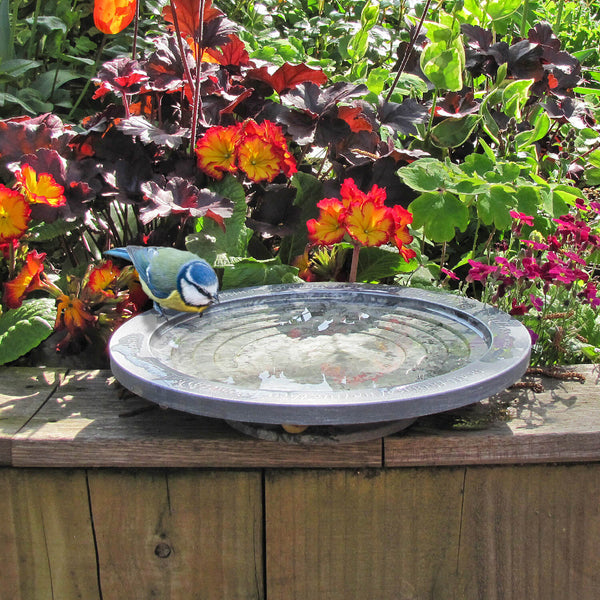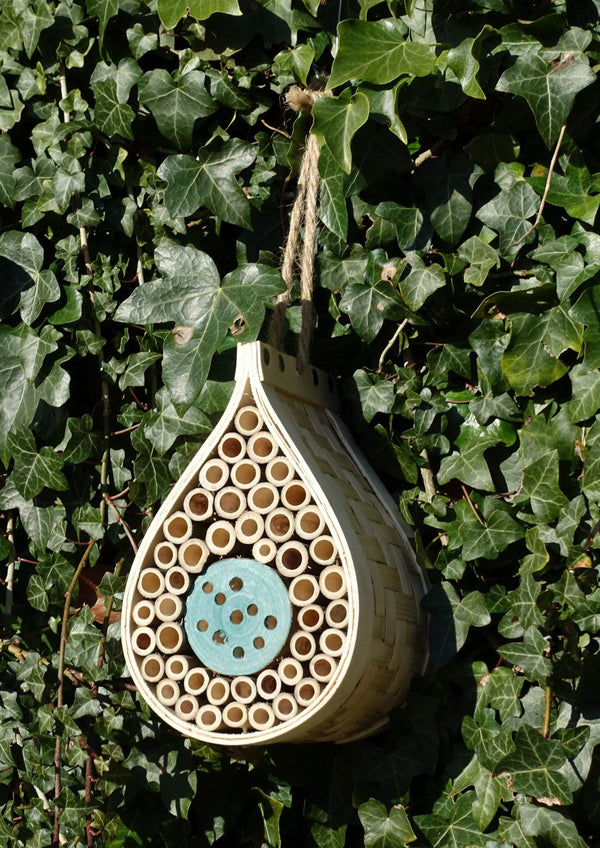The Importance of Slugs and Snails in the Garden
In the UK, it is believed that the average garden contains over 20,000 slug species and snail species - so whether you love slugs or hate them, you have to live with them and although they can be considered a pest, they bring a whole load of benefits to your garden!
Slugs and snails are gastropod mollusks that belong to the class Gastropoda. They are similar, but slugs lack the external shell that characterises snails, the snail shell is used for protection when threatened or during unfavourable conditions. Instead, slugs have a soft, slimy body that allows them to move across surfaces with ease.
Let's delve into the world of slugs and snails and discover why they're more than just garden nuisances.

Ecosystem roles
Slugs and the common garden snail play several very important role in our ecosystem!
Slugs and snails are efficient decomposers, breaking down organic matter such as dead plant material and turning it into nutrient rich soil. They help in the decomposition process by consuming decaying plant matter and facilitating its breakdown through their digestive systems. This process contributes to soil fertility and nutrient cycling in ecosystems - so if you're a keen gardener; you might be relying on slugs to keep your soil healthy! Also, As slugs and snails move through the soil, they disturb and aerate it, improving its structure and promoting better drainage for garden plants.
Slugs and snails serve as a vital food source for various animals, including birds, mammals, amphibians, and other invertebrates. Their high protein content makes them an important component of many animals' diets, helping to sustain diverse wildlife populations, by removing them, we can do a lot of damage to these predators!
Changes in slug and snail populations can serve as indicators of environmental health and ecosystem stability. Monitoring their abundance and diversity can provide valuable insights into factors such as habitat quality, pollution levels, and climate change impacts.

Their natural predators
Slugs and snails have a variety of natural predators that act as a valuable part of natural pest control. Some common predators include:
Ground beetles are voracious predators of slugs and snails. They actively hunt for these gastropods, especially during the night when slugs and snails are most active.
Many bird species, such as thrushes, blackbirds, and song thrush, feed on slugs and snails. These birds use their sharp beaks to extract the soft bodies of slugs and snails from their shells.
Frogs, toads, and salamanders are known to prey on slugs and snails. These amphibians catch slugs and snails with their sticky tongues and consume them as part of their diet.
Several insect species, including ground beetles, rove beetles, centipedes, and certain species of ants, prey on slugs and snails. These insects either actively hunt for slugs and snails or consume their eggs and juveniles.
Some mammals, such as hedgehogs, shrews, and rodents, are known to eat slugs and snails. Hedgehogs, in particular, are famous for their fondness for these gastropods and are often considered beneficial garden allies for controlling slug and snail populations.
These natural predators play an essential role in regulating slug and snail populations and maintaining ecological balance in their respective ecosystems.

Composting and nutrient cycle
Slugs and snails contribute to the composting process and nutrient cycling in several ways. Composting is the natural process of decomposing organic matter into nutrient-rich material called compost. This process occurs through the activity of microorganisms such as bacteria, fungi, and invertebrates like slugs and snails. These organisms feed on organic materials like rotting vegetation, breaking them down into smaller particles through processes like oxidation, fermentation, and decomposition. As a result, the compost pile process generates heat, accelerating the breakdown of organic matter.
Moreover, slugs and snails also disturb the soil as they move through it, improving its structure and drainage. This disturbance facilitates aeration of the soil, allowing oxygen to penetrate deeper and promoting microbial activity.
The nutrient cycle, refers to the movement and exchange of nutrients between living organisms, the atmosphere, soil, water, and rocks. In this cycle, nutrients are continuously recycled and reused by living organisms. Microorganisms, including bacteria, fungi, and detritivores like slugs and snails, play crucial roles in the nutrient cycle by breaking down organic matter and releasing nutrients into the soil. This process, known as mineralisation, makes nutrients available for uptake by plants and other organisms, sustaining life in ecosystems.

Garden health benefits
Many gardeners know slugs and snails as pests because of their keen appetite for vegetation but it's really important that we learn to live with them, and find ways to distract them from our much loved plants, as they have an incredibly positive impact on garden health.
By munching on dead plant material and the compost bin, slugs and snails help break it down into nutrients that enrich the soil. These nutrients are like food for your plants, helping them grow stronger and healthier.
As slugs and snails move around, they wiggle through the soil surface, loosening it up. This makes it easier for air and water to reach your plant roots, which is crucial for their growth. Plus, it helps the soil hold onto nutrients better.
Believe it or not, slugs and snails are a tasty treat for many garden critters like birds, frogs, and beetles. When these predators visit your garden, they help keep slug and snail populations in check naturally, without you needing to use harmful chemicals.

Integrated Pest Management
Integrated Pest Management (IPM) is a smart way to deal with pests in your garden without resorting to harmful chemicals. Instead of just reaching for pesticides whenever you see a bug, IPM involves using a variety of strategies to keep pests under control while minimising harm to the environment and other helpful critters.
First, you need to figure out which pests are causing trouble in your garden. This could be anything from aphids on your roses to slugs munching on your lettuce.
Keep an eye on pest populations in your garden. Is there slug damage? Or are they staying under control? Assess the situation regularly to see if action is needed.
Take steps to prevent pests from becoming a problem in the first place. This might involve things like using barriers to keep pests away from your plants, planting pest-resistant varieties, or keeping your garden clean and tidy to remove hiding spots.
Use techniques like crop rotation, companion planting, and proper irrigation to create an environment that's less hospitable to pests and more welcoming to beneficial insects and other natural predators.
Encourage natural predators like ladybugs, lacewings, and birds to help keep pest populations in check. You can do this by planting flowers that attract beneficial insects or providing birdhouses and feeders to attract pest-eating birds.
Sometimes, you might need to take more direct action to repel slugs. This could involve hand-picking pests off your plants, using traps or barriers, or even using things like row covers to protect your crops.
If pests are still causing problems despite your best efforts, you can use pesticides such as slug pellets or poison as a last resort to control slugs and snails.

Tips for Coexistence
Here are some tips for coexisting with slugs and snails in your garden:
-
Accept that a few nibbled leaves are a natural part of gardening. Slugs and snails are part of the ecosystem, and some level of damage is to be expected. Focus on the overall health of your plants rather than perfection.
-
Create habitats for natural slug predators such as birds, frogs, toads, hedgehogs, and ground beetles. Provide food, shelter, water sources, and native plants to attract and support these beneficial creatures.
-
Place barriers such as copper tape or diatomaceous earth around vulnerable plants to deter slugs and snails. Raised beds and containers can also help protect plants from ground-dwelling pests.
-
Go on regular slug-hunting expeditions, especially after rain or at dusk when slugs are most active. Wear gloves and manually remove slugs and snails from plants, then relocate them away from your garden.
-
Choose plant varieties that are less appealing to slugs and snails. Plants with tough or hairy leaves, strong scents, or high silica content are often less attractive to these pests.










